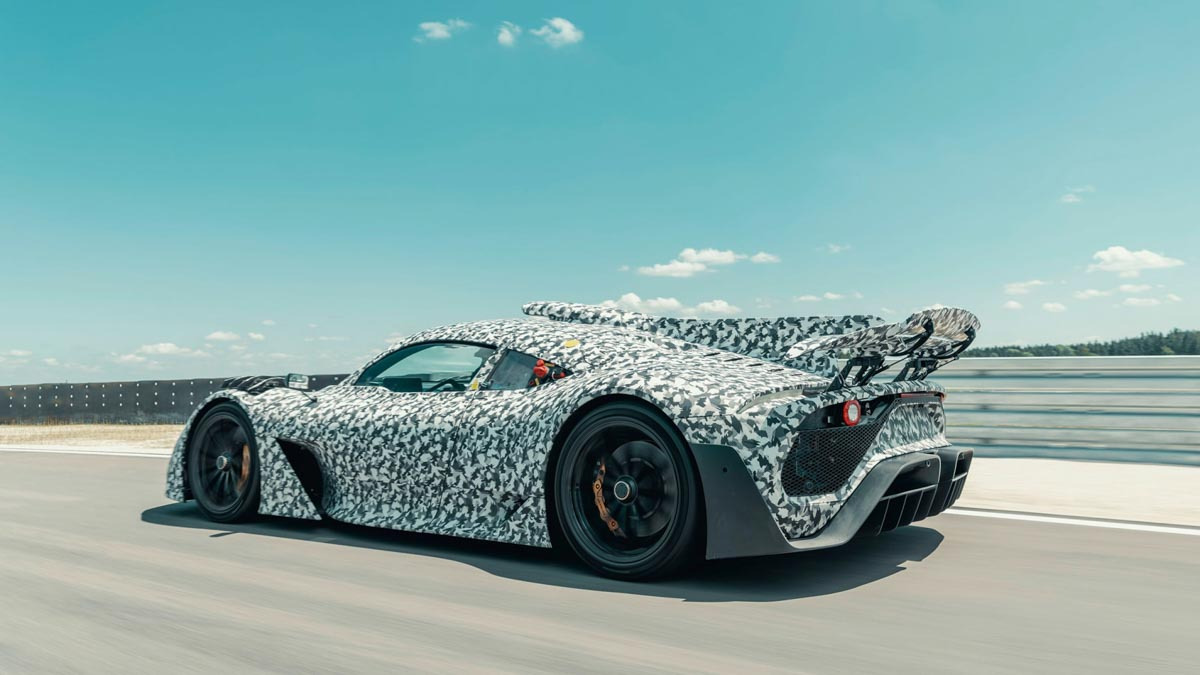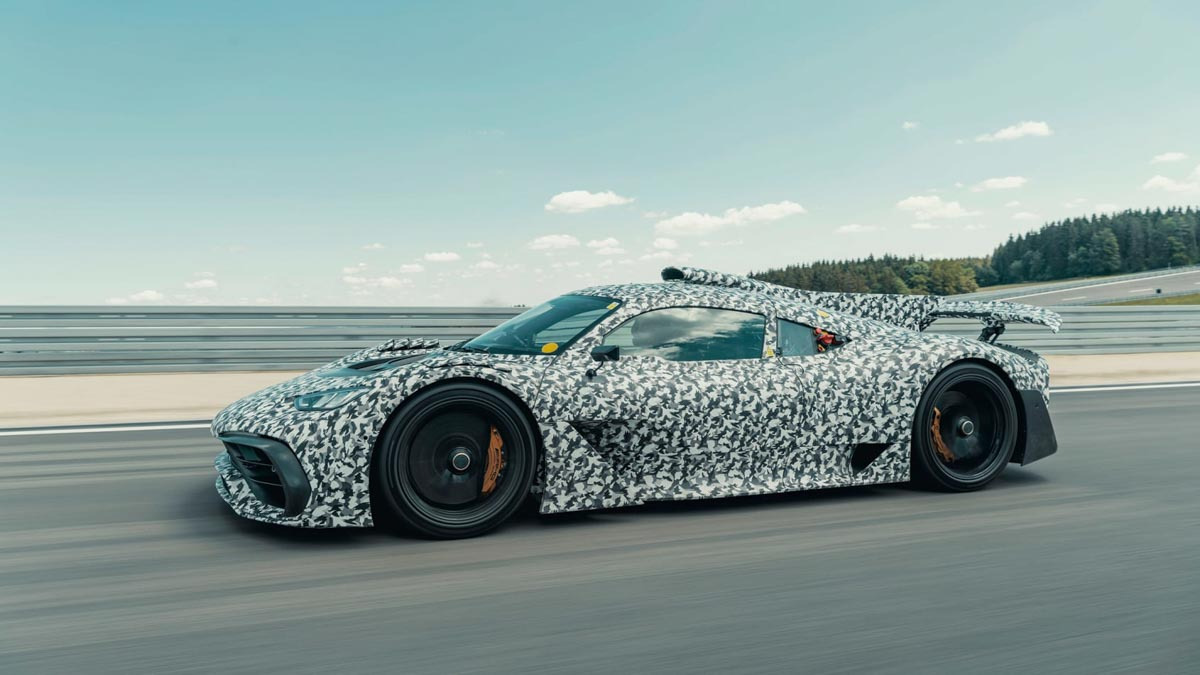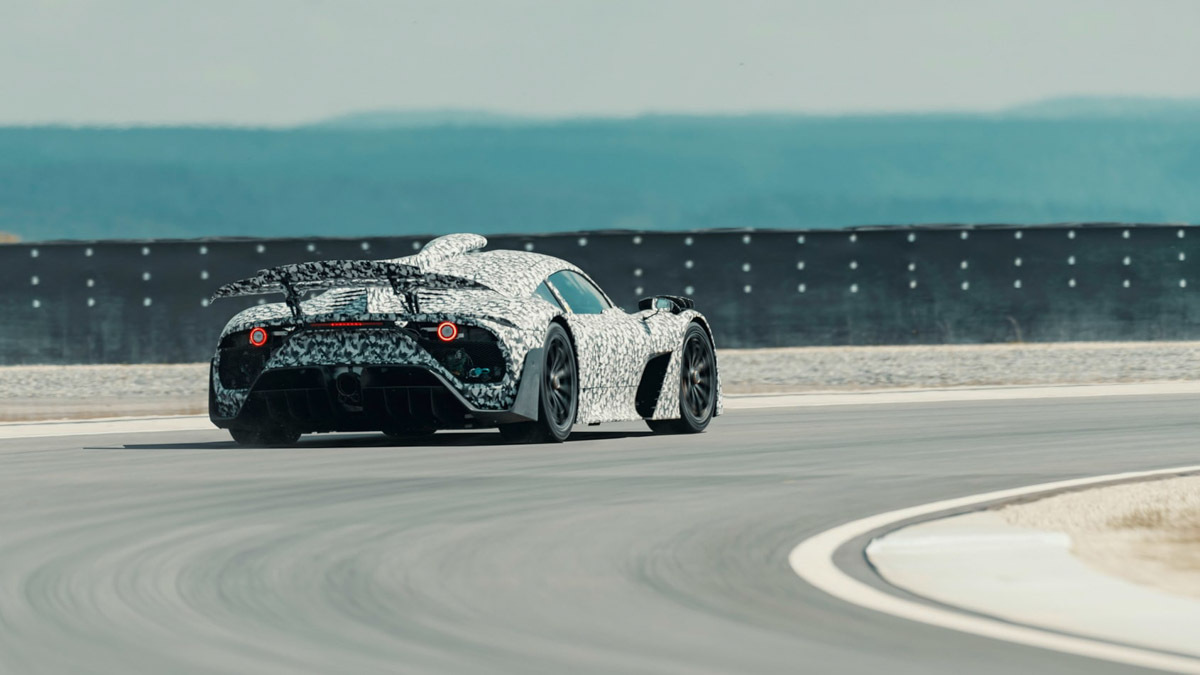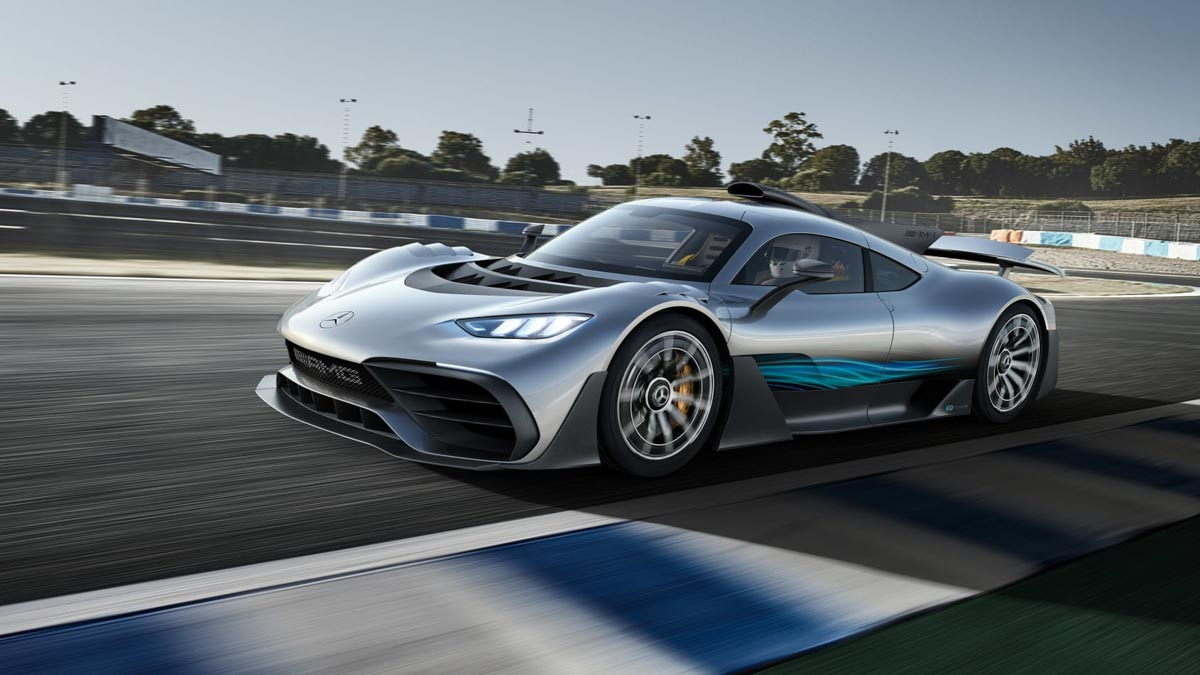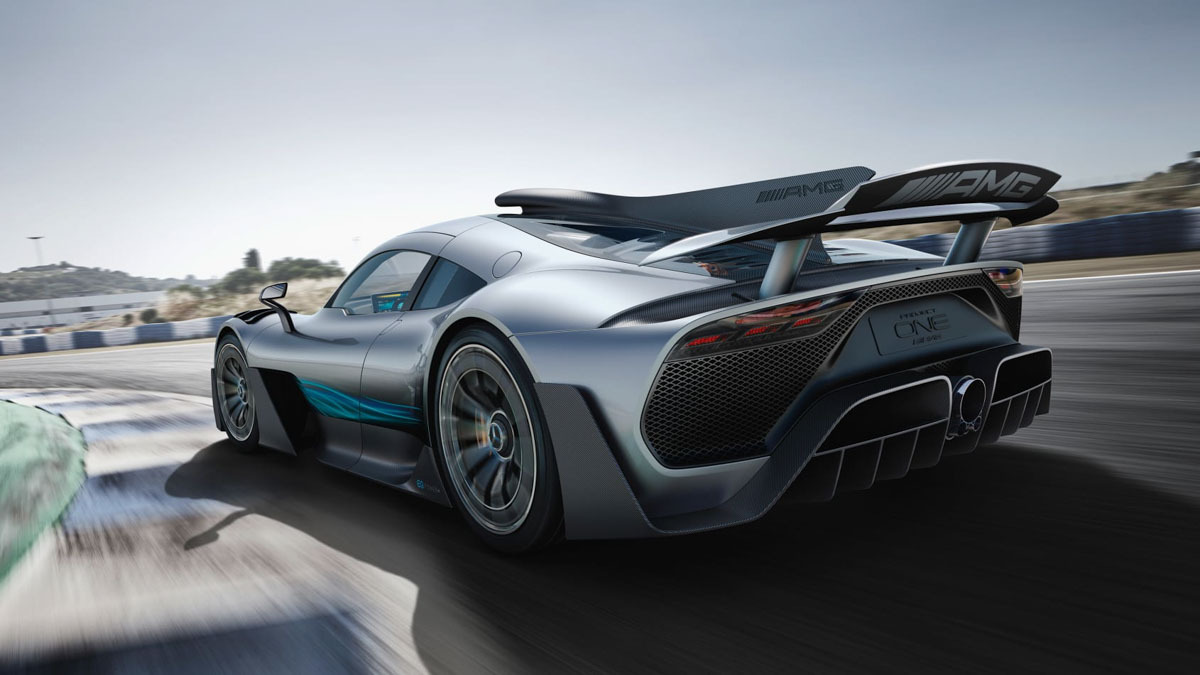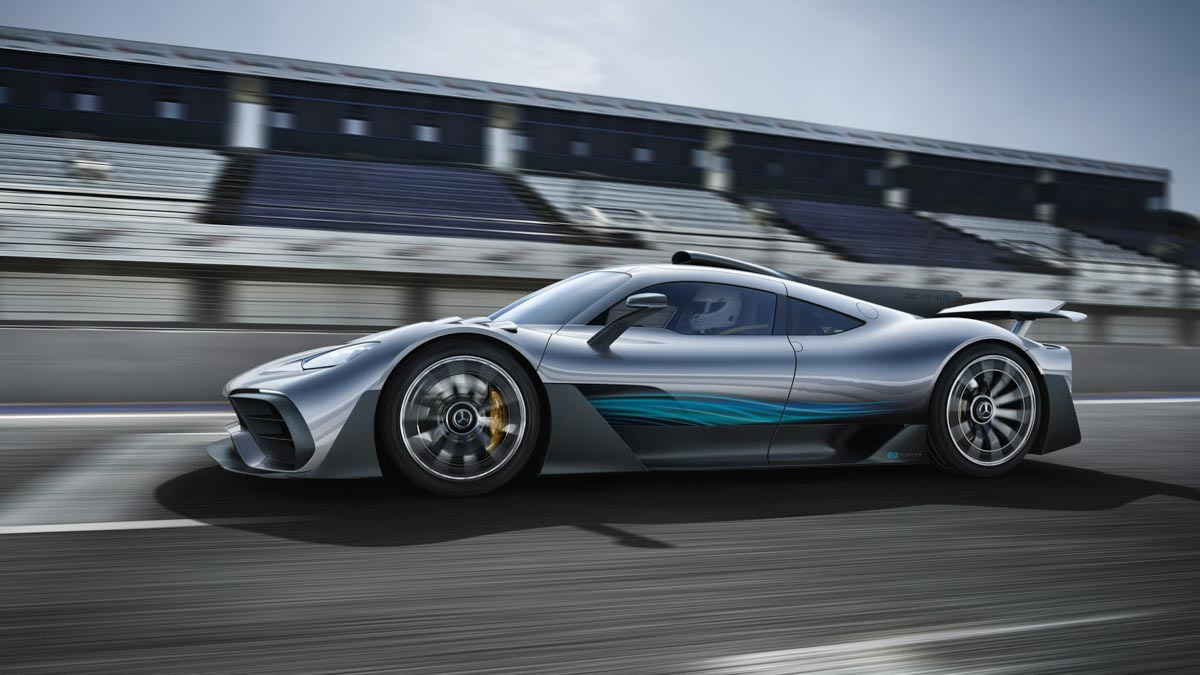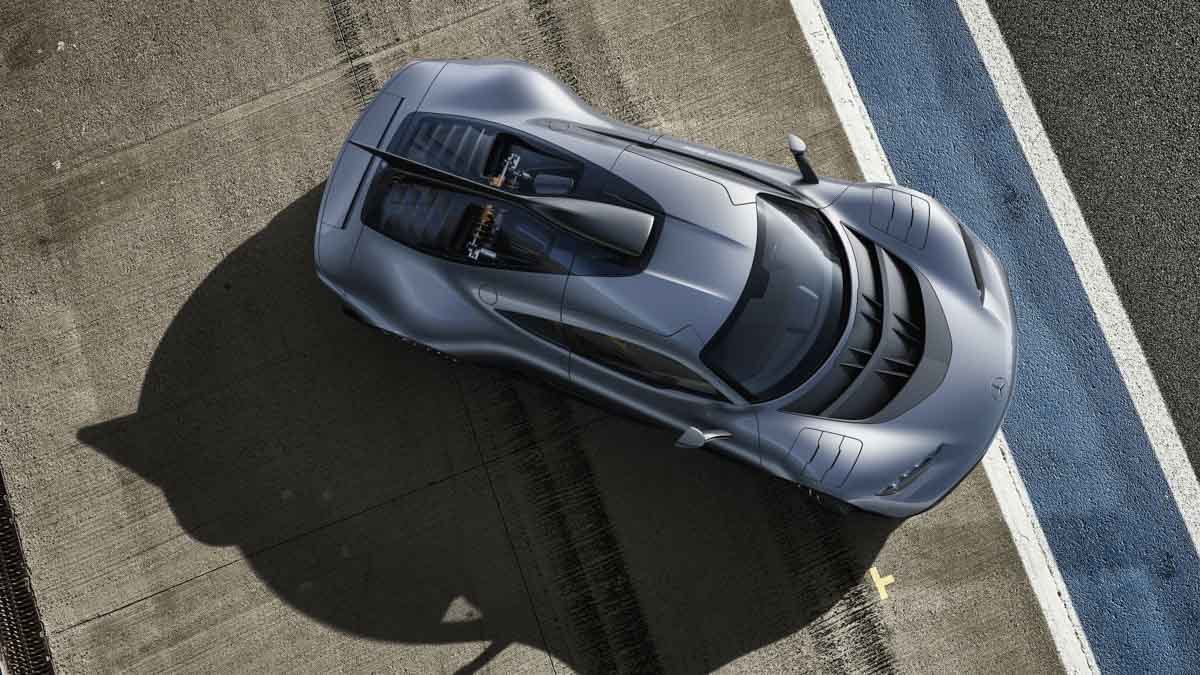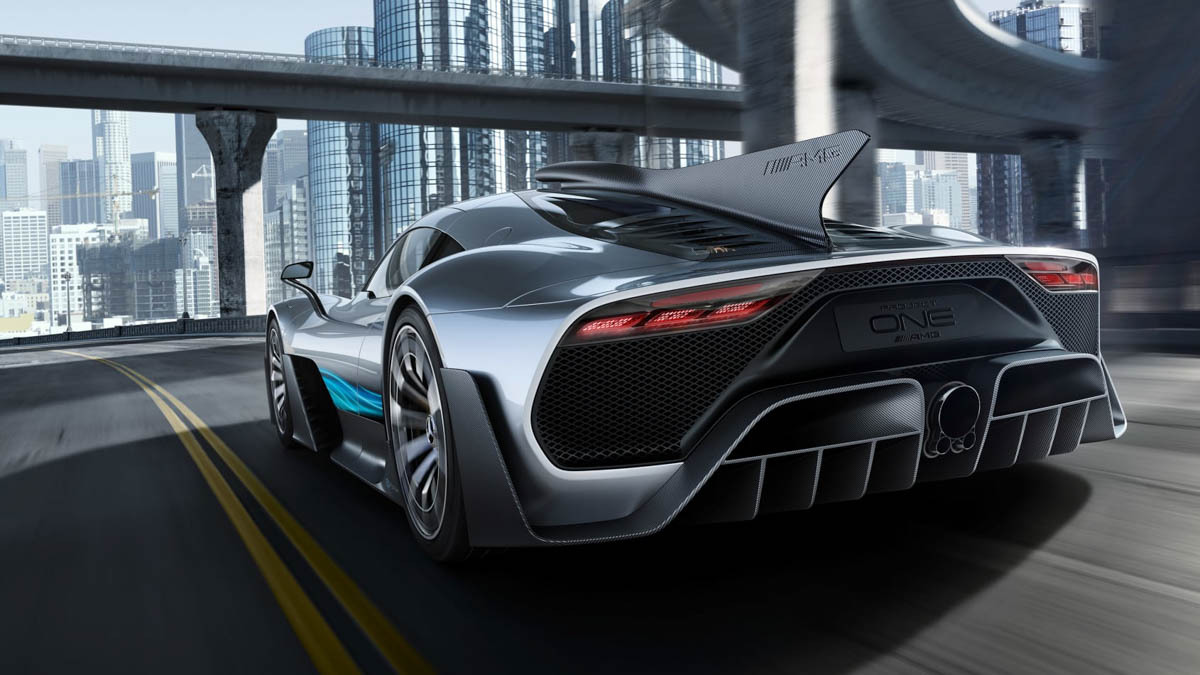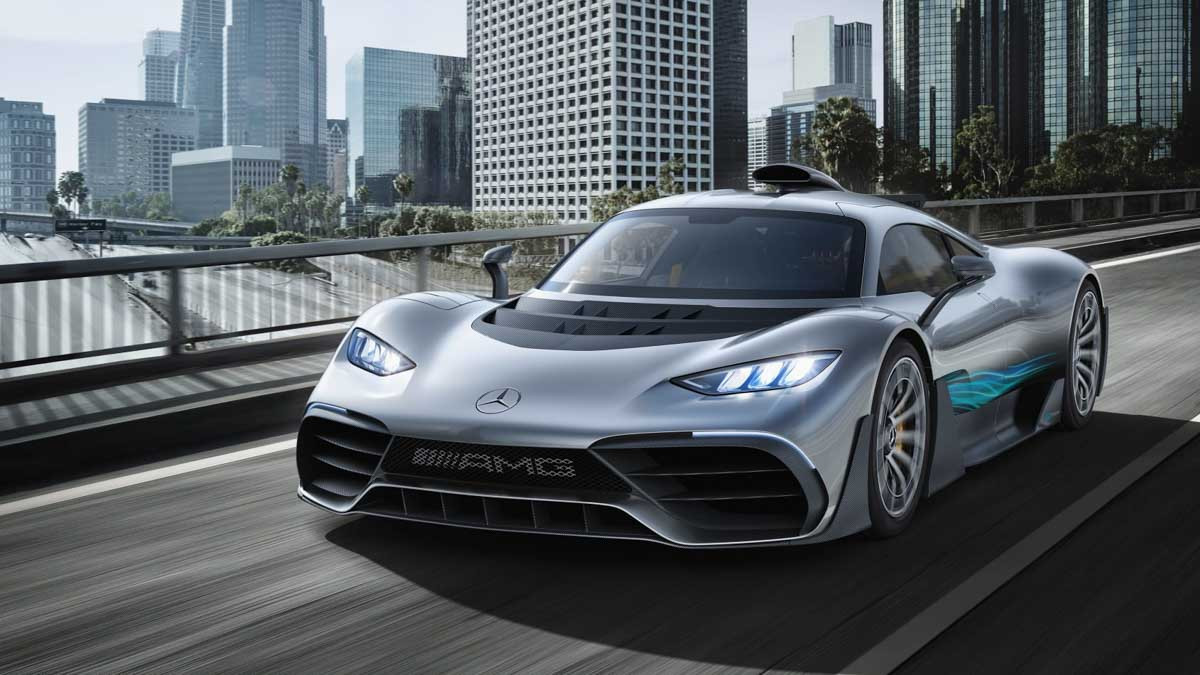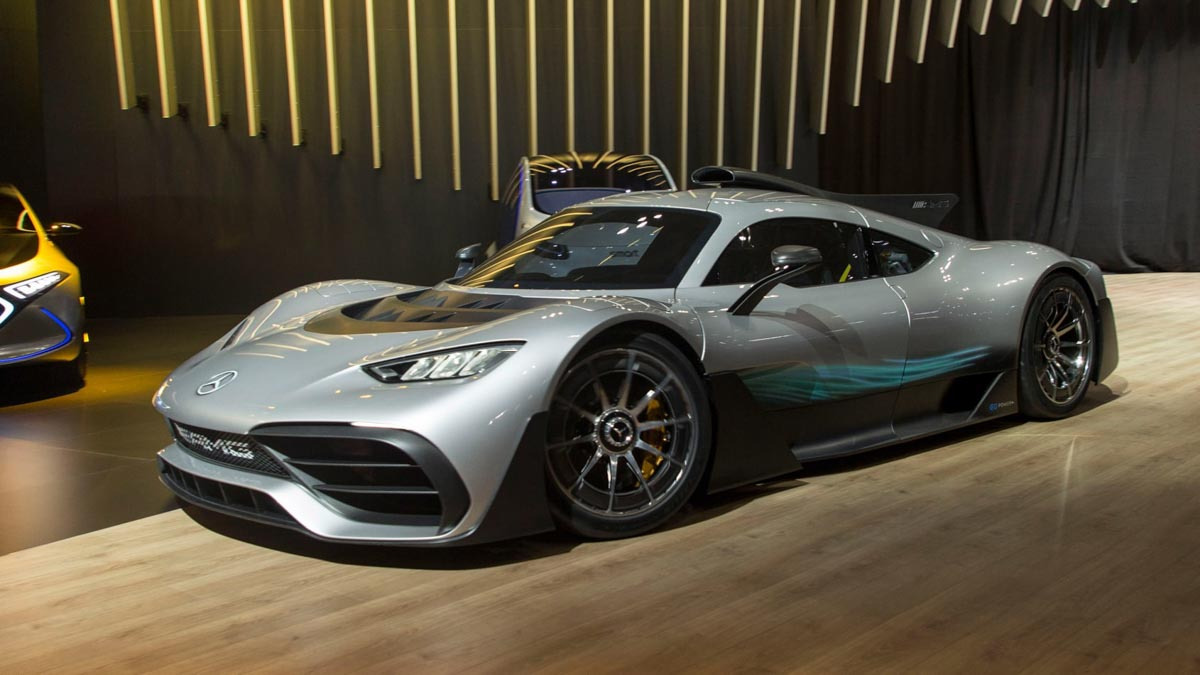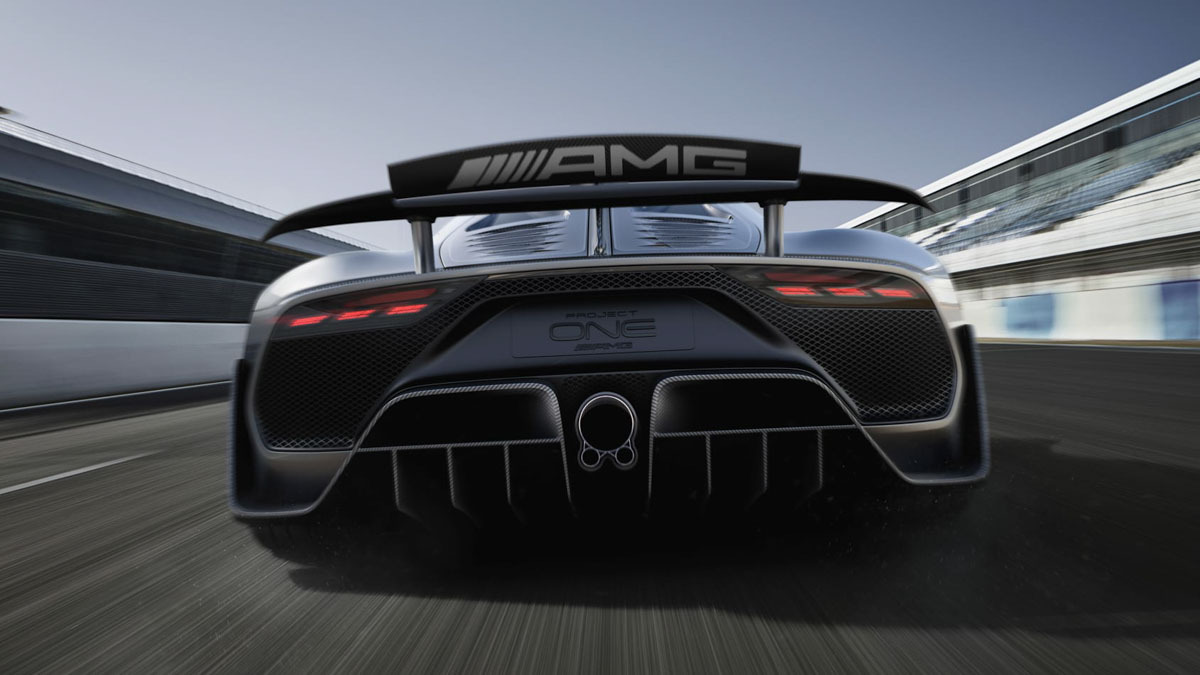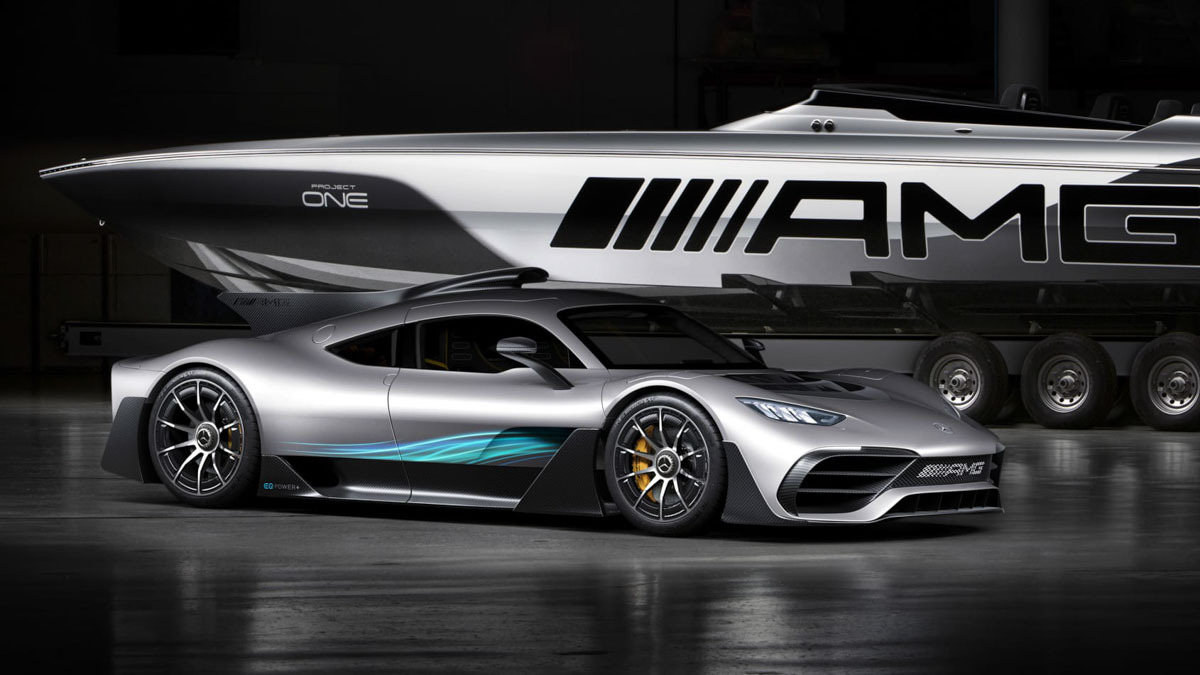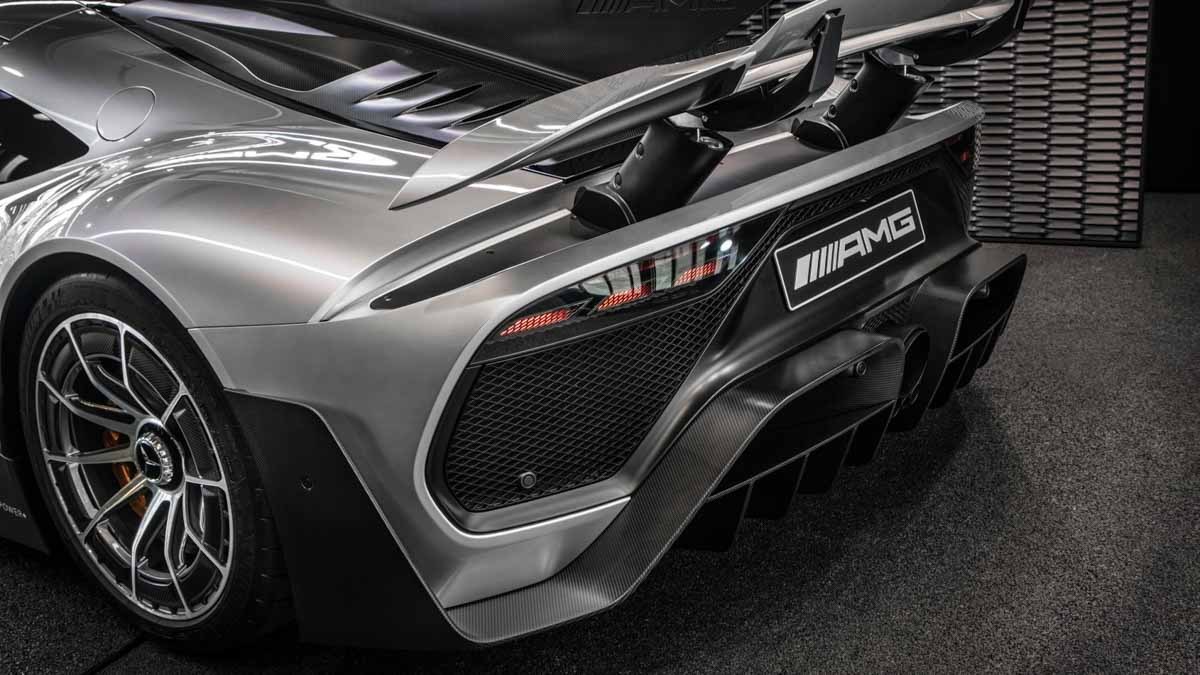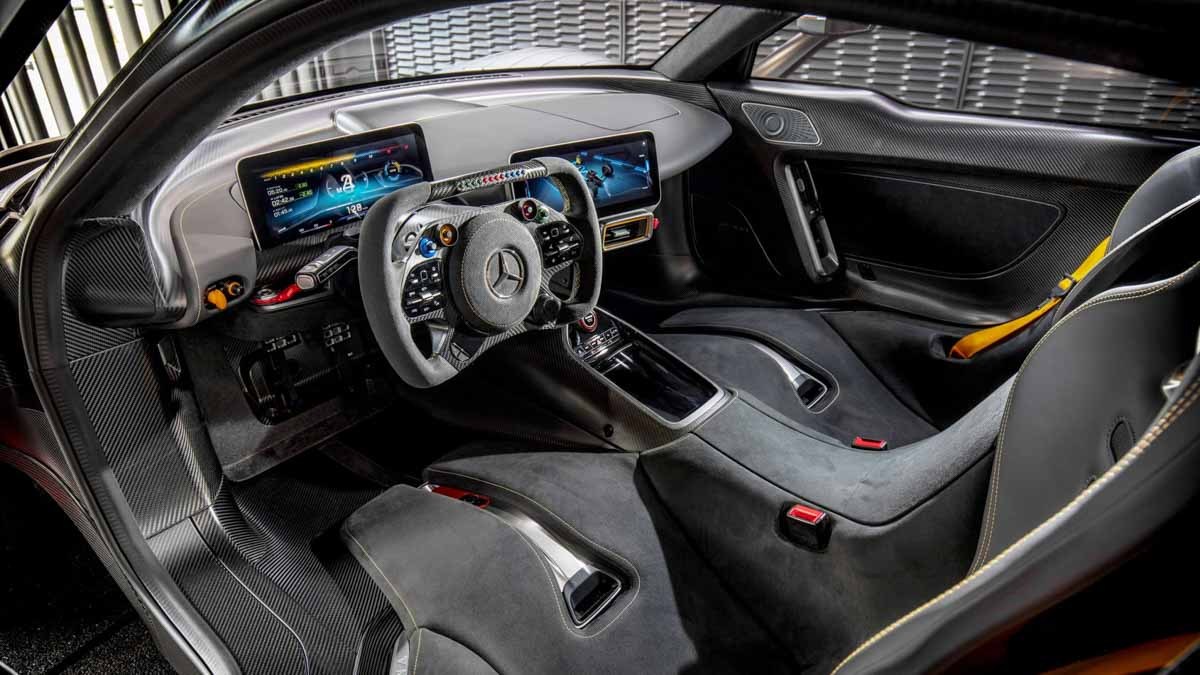AMG’s F1-derived hypercar is almost ready to battle Aston Martin Valkyrie and GMA T.50
Mercedes has confirmed that the AMG Project One will commence production in the middle of next year, with positive steps having been made in its long and challenging development process.
Revealed all the way back in 2017, the Project One was always designed to be at the very cutting edge of road-car engineering, incorporating an F1-derived powertrain into two-seater hypercar chassis that could give its 275 lucky owners the closest possible experience one Hamilton has every other weekend.
Unfortunately, this process of turning a pure competition engine into something homologated for the road is full of complications, hence the delay to the program.
Since its reveal, Aston Martin has revealed its own near-1000bhp hypercar, the Valkyrie, with Gordon Murray also entering the fold with the GMA T.50. It may be lacking the headline figures of the AMG and Aston Martin, but the T.50 has its own aces to play in this three-way battle. It’s going to be quite the triple-test.
Drivetrain
What marks out the One from hypercars before it is the drivetrain. Be in no doubt that the ‘Formula 1 car for the road’ tagline isn’t just marketing guff. It’s a fact. One Mercedes has been keen to emphasise in the build-up to the car’s arrival.
Aft of the passenger cell you’ll find a version of the F1 car’s EQ POWER+ powertrain that has propelled Mercedes to four consecutive constructors and drivers’ championships.
As you might expect, all-wheel drive plays a part, delivered and intelligently vectored by an electric motor in each front wheel. But let’s start with the game changer at the back. As with the current Mercedes F1 car, the rear wheels are driven by a turbocharged 1.6-litre petrol V6 with direct injection and, for the sake of longevity, an 11,000rpm red line – dialled down from the 13,500rpm Lewis has to play with but still vaguely nuts compared with anything even the driver of the most hyperactive hypercar is used to. Final figures are still yet to be disclosed, but AMG has revealed that output will come to in excess of 1000hp, pushing it to a top speed of over 349kph.
A strategically tamed WO8 motor, then? Not exactly. AMG calls it a ‘bespoke unit’ that marries elements from WO6, WO7 and WO8. The engineering is exactly the same, though. Air is fed into the engine by a combined mechanical and electrically-driven turbocharging system with the exhaust turbine located near the exhaust and the compressor near the roof-mounted air intake. They’re joined by a long shaft to which is connected an 80kW electric motor. This primes the turbocharger to eliminate lag and, according to AMG, give the V6 faster responses than a naturally-aspirated V8. The electric motor also recovers waste exhaust energy which can then be used to replenish the hybrid battery block or directly drive the MGUK.
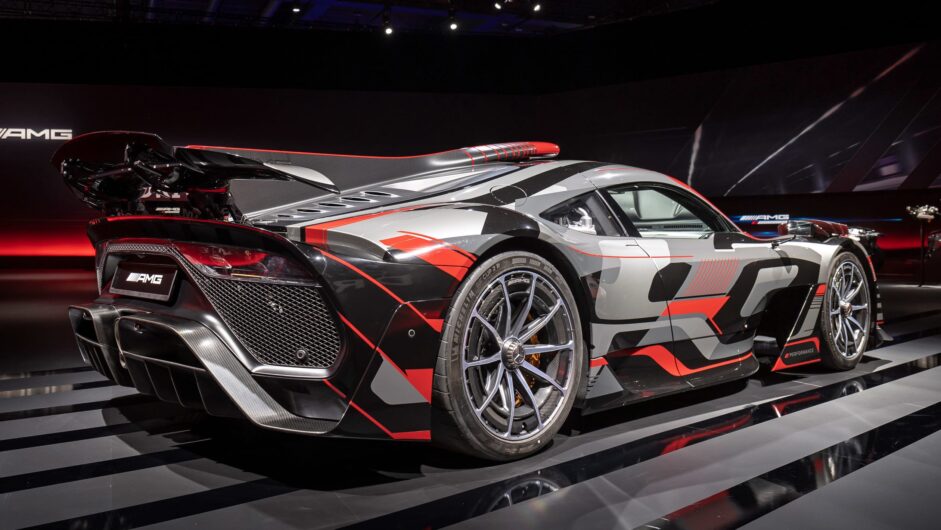
MGUK? It stands for Motor Generator Unit Kinetic, another electric motor positioned on the side of the crankcase and directly connected to the crankshaft. It can either drive the crankshaft, adding 120kW to the power tally, or be driven by it. AMG claims that the combined petrol-electric elements working as a complete unit achieve an unprecedented thermal efficiency of around 40 per cent against a norm of 30-32 per cent. It’s as close as you’ll get to guilt-free 1000hp+ motoring.
Sitting behind the engine is an all-new 8-speed, single clutch, transmission and, above that, the exhaust system which, unlike the F1 version, has a silencer and catalytic converter but retains the single tailpipe.
Each of the electric motors at the front axle delivers 120kW, and each has a tiny gearbox to permit torque vectoring. The battery cells, their configuration, connectors and direct cell liquid cooling are all a direct lift from F1. However, the 800 volt high voltage system (contained in two battery housings on each side of the car) has four times the capacity used in F1. The higher voltage level reduces voltage losses, not least in the cables. It also allows significantly shorter changing times with a constant current level. The One’s driving programs will even have an all-electric mode with just the front axle driven, giving a range of up to 25km. The most extreme ‘dynamic’ mode, on the other hand, will apparently adopt settings used in F1 to achieve the best possible lap times in qualifying.
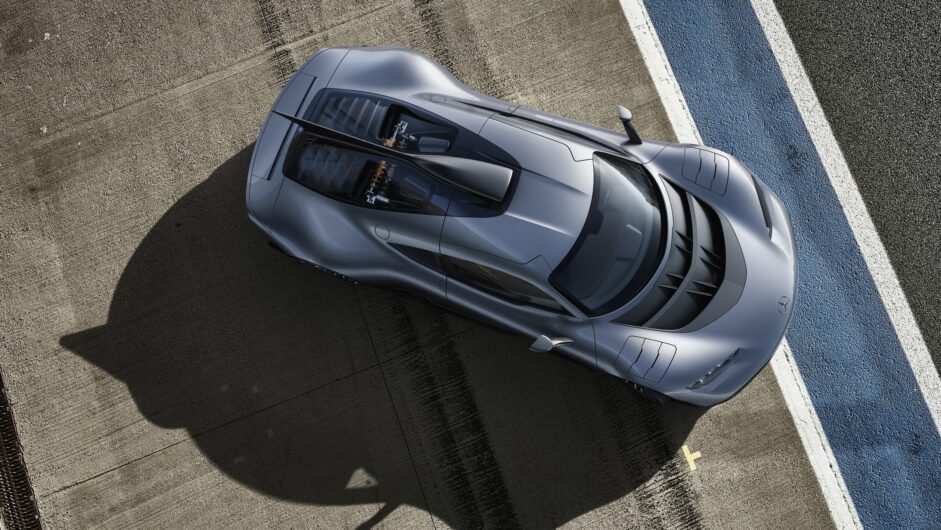
Not strictly up for discussion on this ‘powertrain reveal’ but the suspension system will have race car style, horizontally packaged, pushrod dampers, a carbon tub, carbon ceramic brakes and, of course, active aero. But perhaps most remarkably of all, AMG reckons One owners will be able to drive their cars for 50,000km rather than after a brisk trip around the houses in Monaco before the first ‘revision’ is needed, which means removing the engine and transmission and taking them apart to see what’s been going on, just like a race car. But given the evidence that hypercars tend to accumulate quickly-covered miles at a leisurely rate, the 50k day can probably be put off for a couple of years at least. So thank goodness for the stress-easing effect of that 11,000rpm red line.
Ola Källenius told our sister title Auto Express Mercedes-AMG would make ‘Between 200 to 300’ – a number that Mercedes-AMG CEO Tobias Moers has now revealed to be 275 units (see below). Moers has also now confirmed that the company has more than 1000 people interested in the car, effectively confirming the market for what could be one of the most dramatic hypercars ever.
Active Aerodynamics
As part of the drip-feed of information on the One over the last three years, Mercedes-AMG released images of the car displaying its active aerodynamic functions, the most dramatic of which were the vents above the front wheels: four panels on each side of the car’s front clam hinge upwards to create what look like gills behind the headlights.
There’s some visible active aero at the back too, thanks to a two-piece wing. One element stretches across the entire width of the car’s rear, while the centre section – as wide as the car’s carbonfibre engine cover – is able to rise independently of the main wing. A large diffuser wraps around the entire rear of the car and up the sides to further aid downforce. The rest of the car’s rear remains largely open, to dissipate as much heat as possible.
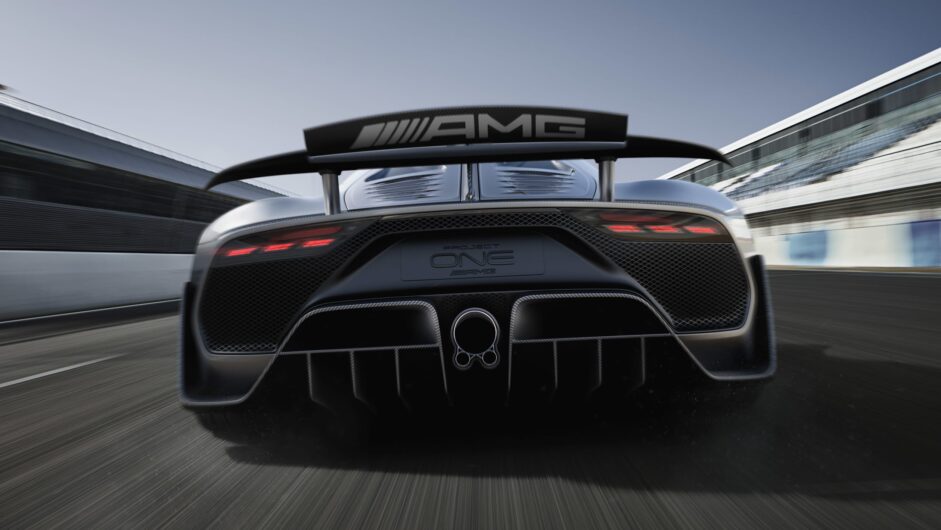
Earlier shots showed the One testing at the Millbrook facility in Bedfordshire – not a surprising location as it’s not far from Mercedes-Petronas’s development HQ in Brackley or its high-performance powertrain facility in Brixworth. Both departments are used to working on Mercedes’ Formula 1 cars, and the One will use the same engine and hybrid system that was originally developed for the race car.
For the One, the drivetrain has been installed into a more conventional two-seater hypercar body. However, the design of the car has been heavily influenced by the powertrain’s requirement for vast volumes of air for cooling and combustion. The roof intake – which channels air straight to the engine – has been lifted from the F1 car, while further intakes found either side of the front apron also supply air to the high-tech power unit.
Tobias Moers on the Project One at Geneva 2017
evo quizzed former Mercedes-AMG CEO Tobias Moers on the hypercar we’re waiting with bated breath – the Project One.
Where does One sit in Mercedes-AMG’s hybrid future?
‘The idea of this hypercar is to give a totally different understanding of performance from anything else on the market. I’m hoping the car will open the door to discussion about the future, including for us. It’s different to anything else – on a technology and engineering level more challenging than anything I’ve done, the peak of technology today on the road.
‘We have an F1 engine that is used to idling at 4500rpm, now idling at 1100rpm; it still revs to 11,000rpm in the road car. It is still a 1.6-litre F1 engine, with the original crankcase and cylinder heads. We have to change the injectors, and reduce the compression ratio a little, but that’s it. You don’t need an F1 team to get the car started: you hit the button and it fires up, on 98 octane – or maybe 95.’
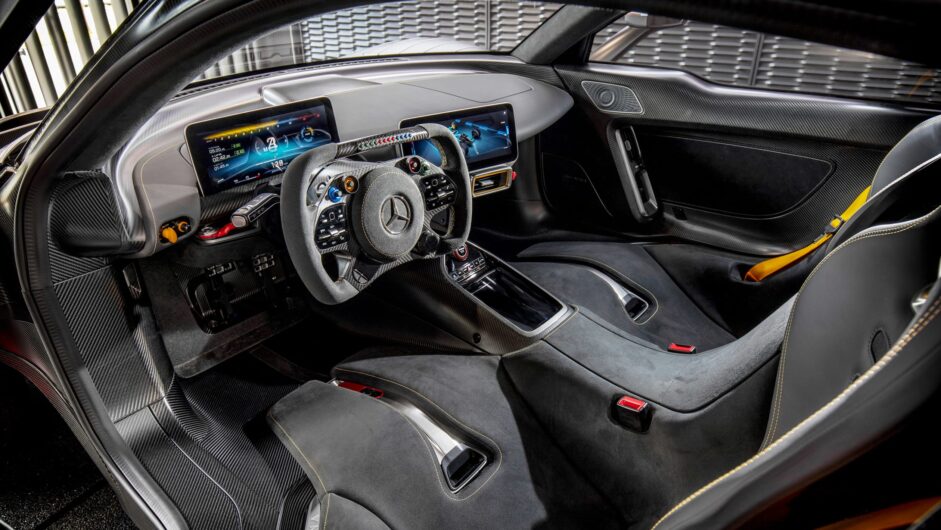
Where do you see One in relation to its rivals?
‘What is the benchmark for this segment? There is no benchmark. The Red Bull car is a totally different approach to us: it’s still a V12. Having unbelievable levels of downforce is good, but the trade-off with the tyres is you lose mechanical grip in slower corners as you have to make the tyres strong enough to take the high loads. The opportunity for us, and the only reason we have the Project One, is the chance to have a street-legal F1 powertrain.
‘I wouldn’t do it with a V8 or V12: we could do it – call it “old school” – but for us to define the future with it would not be feasible. Having the most efficient powertrain was the key for me calling Andy [Cowell – MD at Brixworth] and asking him [if it was possible] before I brought the idea to the board. The board has confidence in Andy and I, so we got the sign off. We are close now to four digits for prospects and only 275 cars – our customers want something special, they want new technology.’
Tobias Moers was in conversation with Adam Towler
This article originally appeared at evo.co.uk
Copyright © evo UK, Dennis Publishing


